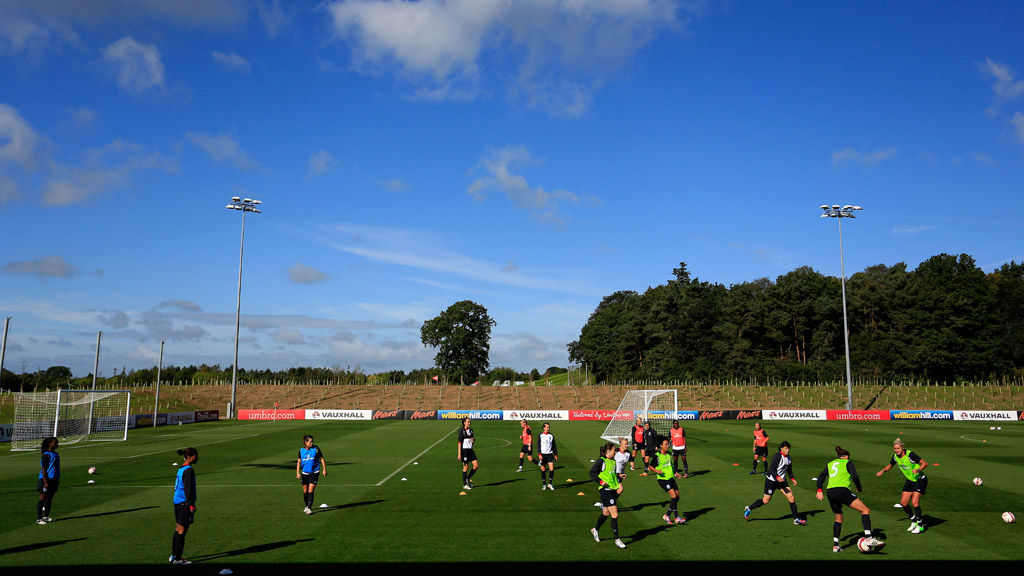Fields of dreams – England’s new football academy
With 11 full-size pitches, a full-size indoor pitch, and a training pitch that replicates Wembley, the FA’s new St George’s Park national complex today received the royal seal of approval.
It took longer to achieve than some footballers’ careers, but England finally has an academy to match the best in the world.
The idea behind the FA’s St George’s Park complex in Burton-on-Trent is eventually to make the country’s football teams the best in the world, too.
The National Football Centre, set in 330 acres of parkland on the Staffordshire-Derbyshire border, cost more than £100m, and was first conceived at the beginning of the century, by the FA’s then technical director, Howard Wilkinson.
Impressed by France’s achievements in winning the World Cup and European Championship in successive tournaments in 1998 and 2000, Wilkinson — a former club manager — championed the creation of a dedicated centre where players, coaches and those associated with them could learn everything there is to know to become better at their respective roles — an “Oxford University of coach education”.
France built its own national academy at Clairefontaine in 1988, becoming the envy of the football world.
The nation’s international success in the following decade only underlined its status.
By 2003 Spain had its own Soccer City, the Cuidad del Futbol, near Madrid.
In the following decade its national team won the European Championship twice and the World Cup – and is current holders of both.

Wembley priority
A pattern was emerging. The case for an expensive national complex in England was growing.
The land was bought in 2001, but its evolution came to an abrupt halt when FA administrators decided the reconstruction of Wembley Stadium was a more urgent priority.
That was duly delivered at a cost of more than £800m.
But St George’s came back on the FA’s radar as English football slipped further behind the likes of France, Spain and Germany, and the project got the green light in January 2011.
Less than two years on, today’s official opening of the complex by the Duke and Duchess of Cambridge – while the England squad trained on the pristine made-to-measure pitches – marked a significant achievement for English football’s much-criticised administration.
Henry Winter, chief football writer of the Daily Telegraph, who has long been a champion of the project, called it the ultimate compliment.
And certainly the presence of the FA president gave the occasion a grandness and prestige befitting of the dreams of those behind it.
St George’s Park contains 11 full-size outdoor pitches, a training pitch that replicates Wembley, a full-size indoor pitch with viewing gallery, and a multi-purpose indoor sports hall, as well as the most up-to-date medical and rehabilitation facilities.
Training the trainers
England’s first-team squad is training there, but significantly, so will the various youth squads – and England’s women’s and disabled teams.
The National Football Centre aims to train coaches as well as footballers, from promising youngsters to world-class players, such as Steven Gerrard and Wayne Rooney.
Some of the state-of-the-art rooms bear the names of England icons.
St George’s Park is home to the best football facilities, the best coaching facilities and the best of medical and sports-science facilities in the country.
There are heated pitches, cutting-edge video-analysis suites, the latest gyms – and, of course, a hotel.
FA General Secretary Alex Horne said: “The facilities are excellent. It’s all here on site and it’s all first class. They can just come out from the hotel on to the training pitch – and it’s an exact replica of Wembley.”
Sir Trevor Brooking, the former West Ham and England star who is now the FA’s director of football development, says the complex provides the ideal opportunity to create a new template for how the game should be played, right from the grass roots.
“Rather than coaches thinking about where they are in the league at the end of the week, they should be thinking, ‘Are my players getting better, are we improving them from a technical point of view?’
“If we can improve kids technically, I think they will also stay in the game longer.”
And that, of course, should increase the chances of success at club and international level.
Whether it will should become clearer within the next decade.




